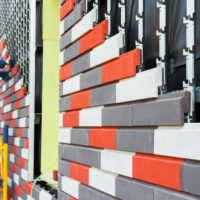
The company launched the initial dataset in February and involves remote inspection tools and data sources such as satellite imagery, drone footage, building and planning records.
In addition, there were physical surveys and other input, which was then scrutinised by a group of over 600 Royal Institution of Chartered Surveyors (RICS) qualified surveyors.
At the time, the dataset contained property-level cladding data for 485,234 properties within tall multi-dwelling units at 18 metres or higher in height.
This dataset has been expanded to include 1,122,004 dwellings, and includes multi-dwelling units of less than 18 metres and those between 11 and 18 metres.
WhenFresh reiterated that it was a live dataset and there were monthly updates from the continuing programme of property inspections from RICS-qualified surveyors.
The properties are characterised in three categories. Green is if the building has no cladding, amber is if the building potentially has cladding and merits an EWS1 inspection and red if the building has cladding.
Since the launch of the dataset, 40,047 dwellings have been updated from amber to green status, 23,933 have been moved from amber to red and 10,019 have shifted from red to green status.
Mark Cunningham, WhenFresh CEO and co-founder, said: “We expected the original cladding dataset launch to be well received, but we’ve been staggered by the level of interest from mortgage lenders, insurers, reinsurers, and other parties.
“We’re therefore fully confident that the investments made in expanding the reach, breadth, and depth of the dataset as it continues to evolve will bring significant further benefits and risk insights for those who need to properly understand property cladding risk.”
















